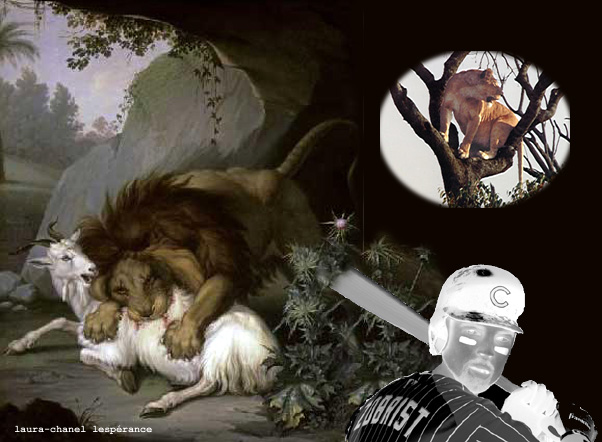 I hate to say it, but lions are climbing trees more than ever before. I’ve got to figure this one out.
I hate to say it, but lions are climbing trees more than ever before. I’ve got to figure this one out.
Lions have always climbed trees, but honestly not as much as people report them doing, now. On my own safaris I’ve noticed it, and blog and after blog today confirms the behavior as if it were as normal as strutting across the veld to find a piece of shade to flop down into. So how come?
Lions are not created to climb trees. Their massive shoulder muscles are designed for clamping down prey on the run, totally unlike the leopard’s whose massive muscles are structured for pulling.
Leopard are often less than half the size of a lion and easily lose their kills to them. So leopard take their kills into trees, very high trees sometimes, much of the time pushing the prey upwards. A big 170-pound male easily takes a 350-pound wildebeest 30-feet into a tree.
Lion’s balance isn’t very good, either. One of the things about being the king of beasts is that there’s a lot you don’t have to do. I regularly watch lion stumbling, especially when they’ve stuffed themselves with 75 pounds of unchewed hunks of meat turning their bellies into grocery sacks swinging on bicycle racks.
Leopard take a week to eat their wildebeest. Lion do it in a few hours.
Most importantly, lion’s ankles are made for sudden spring and little else. Leopard are double-jointed experts. Their paws practically wrap around a thin branch and still manage to grasp it firm. I’ve even seen several-week old leopard out at the end of trees like squirrels.
Leopard’s fur is denser, which believe me helps in trees that are covered with thorns! Lions’ bellies, unlike leopard’s, are nearly furless.
It’s hilarious to watch lion in trees. They slip and sometimes tumble on the way up, teeter once they’re there, and start massive panting in embarrassment if anyone’s looking. So why for Aslan’s sake do they do this?
Lake Manyara National Park in Tanzania long ago was famous for its “lions-in-the-tree.” Everyone thought that meant these were super lions. One early elephant researcher claimed it started in the 1950s when the lake flooded and produced so many mosquitoes that the lion assumed the behavior of New Guinea river people and started to live high.
Enormous time has spent on this: The truth is that Manyara is the park with the greatest diversity of trees, and there are just a lot of trees with unnaturally low, big horizontal branches that the lion can jump onto pretty easily.
But … not true in the Serengeti, or Tarangire, or even the Mara… where I’ve seen lion families en masse ascend timber.
Last night the reason became obvious. The curse of the goat. The curse of the goat wasn’t as rigley as we thought. Lions don’t like goats. When forced they’ll take one, but the truth is that I like cooked goats better than they do.
But as Africa developed and farmers prospered, there were more goats than you could shake a kobu at. It’s like some come-on barman throwing out free nachos. So with time, lion ate more and more goats.
That’s not particularly good for a lion’s digestive system because a goat is so small that the lion ends up eating stuff it shouldn’t, like bones and fur. Indigestion followed, and anyone who’s gone to a Thanksgiving dinner knows what that means. You’ll do almost anything to get the swelling down.
Even climb trees.
So now that the curse of the goat is lifted, they won’t have to climb trees any more. Those of my clients who were fortunate to be with me when I found so many lions-in-the-trees should preserve their pictures and learn how to use eBay before entering assisted living.